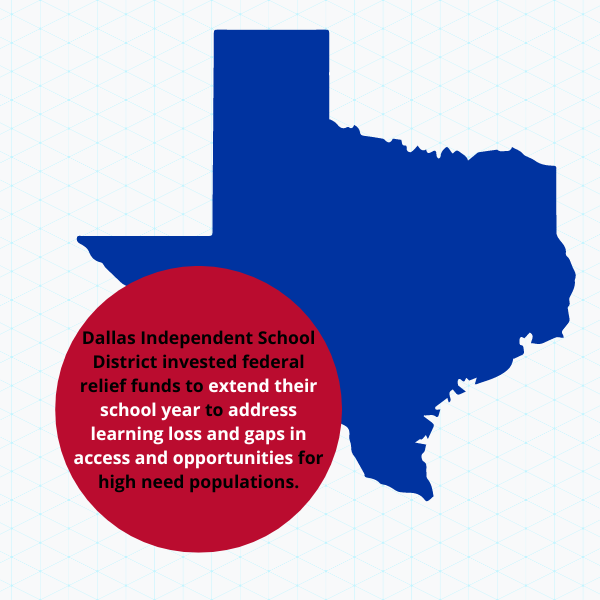Like many districts in the U.S., Dallas Independent School District (Dallas ISD) saw longstanding inequities in access and opportunities worsen as a result of the COVID-19 pandemic. Students of color and students from low-income backgrounds faced more barriers to participate in online learning and, when schools reopened, had less access to after-school and extracurricular programming to supplement their learning. Dallas ISD leaders viewed their ESSER funding as an opportunity to expand their extended learning plan.
As part of a comprehensive approach, the district focused heavily on an extended school year option to address unfinished learning. To extend the school year, schools went through a six-month planning process that required 80% of staff and families to weigh in on the change. Forty-six schools, serving 22,000 students, implemented an extended school year. In the interest of increasing learning time as a means of increasing equity, all high-priority campuses (schools that have large populations of students of color, emerging bilingual students, and students from low-income backgrounds) were required to go through the planning process.
Those same high-priority schools were priorities for after -school programming, which rolled out at 55 schools that served a majority of students from low-income backgrounds and did not have access to the same enrichment activities that wealthier schools in the district did. The after-school programming is free to all students and run by school staff for three hours Monday-Friday for the entire academic calendar year. Activities, including accelerating learning opportunities in small groups, are offered on a school-by-school basis based on student need and interest. After-school site coordinators receive a $5,000 stipend; the staff are paid $31 an hour. This data, as well as other assessments, will be critical for understanding the impact of the district’s approach.
This practice was featured by The Education Trust in Promising Practices: A School District Guide to Advocating for Equity in American Rescue Plan Spending.

